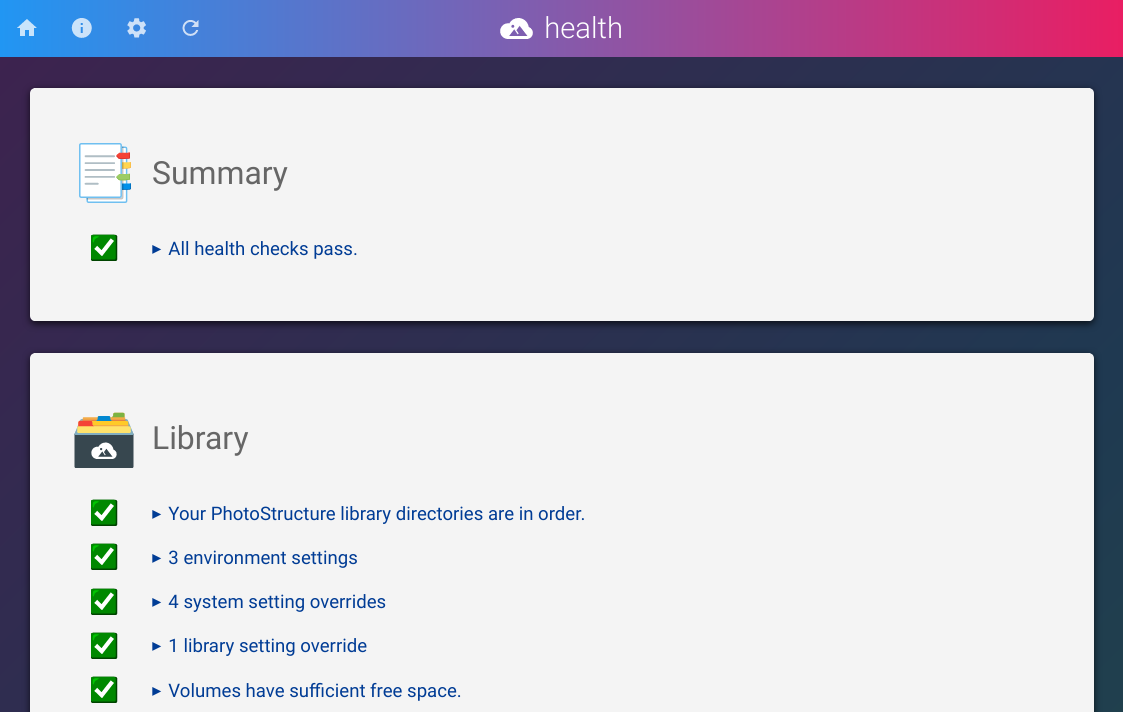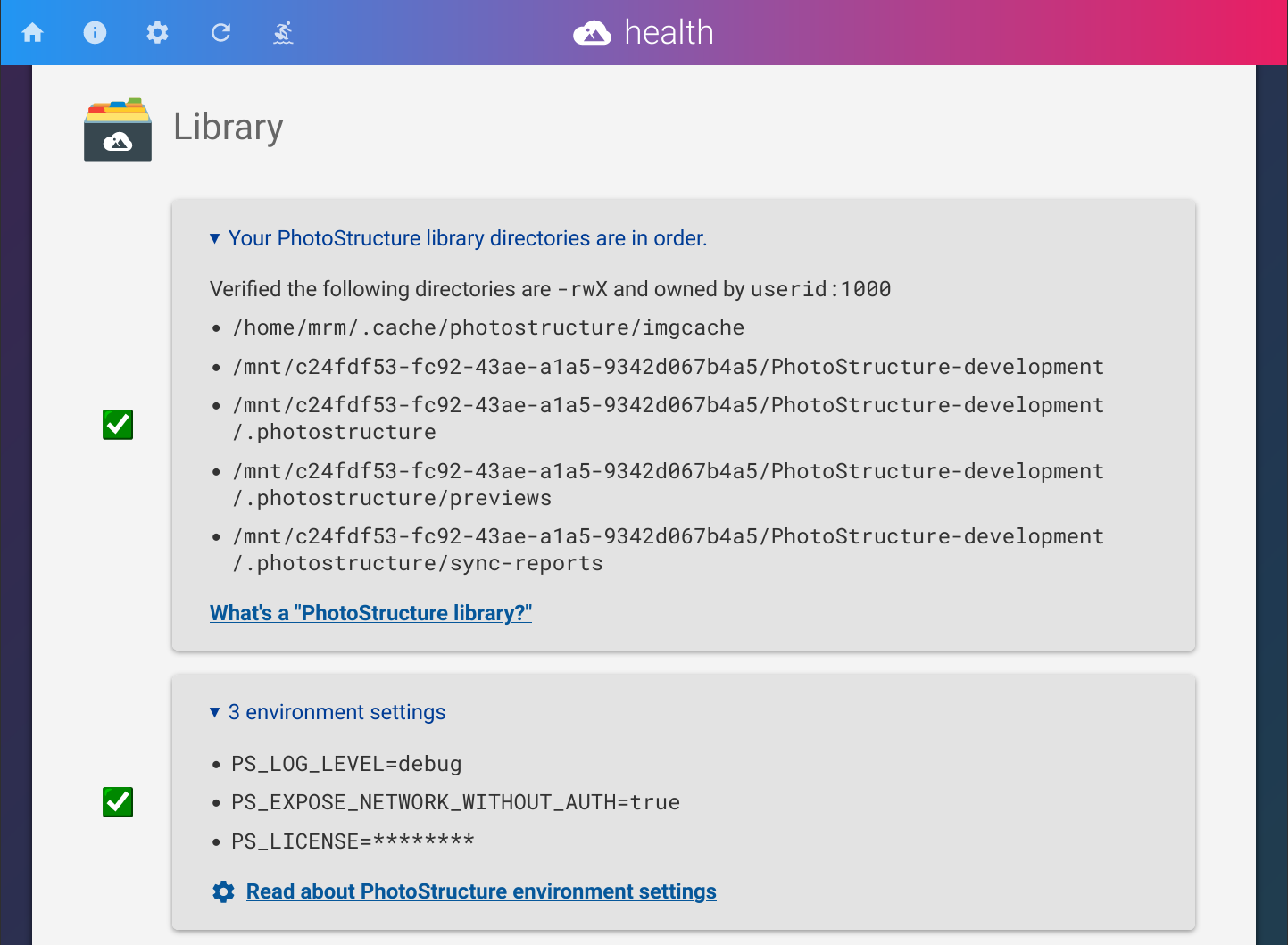PhotoStructure v2024.3
🤔 v2024? What happened to v2? 🔗
As of August 2023, PhotoStructure versions will use “calendar versioning,” or CalVer, using scheme YYYY.MM.MINOR.
All of what was slated to be released in v2.x will be in the v2024.3 release.
✨ Feature highlights in v2024.3 🔗
PhotoStructure v2024.3 includes many new features, a bunch of improvements behind the scenes, and a ton of bug fixes and stability improvements.
🗺️ New geo location tagger 🔗
PhotoStructure now adds Where/Country/Region/City tags for those photos and videos with Latitude and Longitude metadata.
Note that this feature uses an embedded geo database, so no network access is required. This initial implementation only inclues cities with a population of 1000 or greater. See the new tagGeo and tagGeoTemplate settings for more details.
💜 Asset management 🔗

New asset header in v2024.3
- ✨ The most popular feature request, support for deleting and hiding your photos and videos, is now available to plus subscribers, including support for “liking” and “excluding” files. Read more about these features here.
- Tap to open your library in full-screen mode
- Tap to download the original photo or video Asset
- Tap to like or “fave” the current asset.
- Tap to archive the current asset.
- Tap to remove the current asset from your library.
- Tap to delete the current asset from your library and your filesystem.
🩺 Health checks 🔗
Prior versions of PhotoStructure would shut down if anything prevented PhotoStructure from showing you your library, leaving you with an empty browser error page, and wondering what went wrong.
Like (almost all!) self-hosted software, it was up to you to debug the issue. Although PhotoStructure does have extensive logging, accessing it can be inconvenient, especially if you’re not familiar with a terminal, and the logs won’t quickly highlight what went wrong.
This new version of PhotoStructure will always try to stay up and running, even if your library isn’t available, or something’s amiss.
If something goes wrong, PhotoStructure will redirect the browser to a new health check page:

Partial screenshot of PhotoStructure’s new health page
Every health check can be tapped to view test result details which can help verify your setup:

Expanded details of health checks
If PhotoStructure discovers anything wrong, you’ll be automatically redirected to this page, which should highlight what’s wrong, along with links to relevant documentation, and in some cases, buttons that will let PhotoStructure try to repair itself.
💪 Improved support for large libraries 🔗
- ✨ Sync imports are substantially faster for larger libraries and servers with 8+ CPUs thanks to a new concurrency approach. Read more about this here.
📝 Improved reporting 🔗
-
✨ Sync reports make it easy to see exactly what files and directories were imported, when, which were skipped, and why.
-
✨ PhotoStructure’s log messages can be sent to a log service like Graylog or Seq by setting
PS_LOG_SERVERandPS_LOG_SERVER_LEVELsettings.
⚡ Front-end improvements 🔗
-
✨ Tag galleries now support both cropped square thumbnails as well as uncropped thumbnails that preserve the original aspect ratio
-
✨ Image loading in tag galleries has been improved, especially for bandwidth-constrained networks. See
PS_LAZY_LOAD_EXTRA_VHfor details. -
✨ Older versions of Safari are now supported.
🗄️ Improved metadata handling 🔗
-
✨ If you’ve opted into “automatic organization”, unique sidecar contents are now copied into your library, including metadata inferred from siblings, which is retained in a new
Historysidecar tag. -
✨ Fuzzy sidecar matching was improved so
photo.JPEGnow matches up withphoto.JPG.XMP(note the mismatched “.JPEG” and “.JPG”) -
✨ Mountpoint and volume metadata is cached across restarts and across processes, especially helpful for users with many external drives and/or remote filesystems
-
✨ Timezone extraction (especially with videos) was improved
♊ Improved deduplication 🔗
-
✨ PhotoStructure’s image hashes, used to differentiate image content, now use 3 distinct and novel algorithms, using DCT, mean, and gradient diff, all in CIELAB colorspaces. Applying a suite of different hash algorithms helps PhotoStructure increase both precision and recall when comparing different images.
-
✨ Dominant color extraction, also used to compare image content, now uses adaptive greyscale prefiltering, iterative k-means clustering, and retains percent coverage per dominant color to improve correlation quality.
-
✨ Some camera models render RAW/JPEG pairs encoding the same bit of metadata in different fields, and with slightly different values. PhotoStructure knows how to handle this scenario, and a bunch of other cases now.
These new features accompany many new correlation and threshold settings to help you configure deduplication to work for your image corpus. Read more here.
🥧 Raspberry PI support 🔗
- ✨ PhotoStructure for Servers now has experimental support for Raspberry PI. We recommend at least an RPi 4 with 4GB of RAM.
🍎 Improved macOS support 🔗
- ✨ Native Apple Silicon support
🪲 Bugfixes and stability improvements 🔗
More than 500 features, bug fixes, and general improvements were applied since the last stable release! Check out the release notes for details.
🤔 Questions? 🌹 Feature requests? 🐞 Found a bug? 🔗
Say hello in the official PhotoStructure forum or Discord, we’d love to hear from you.
